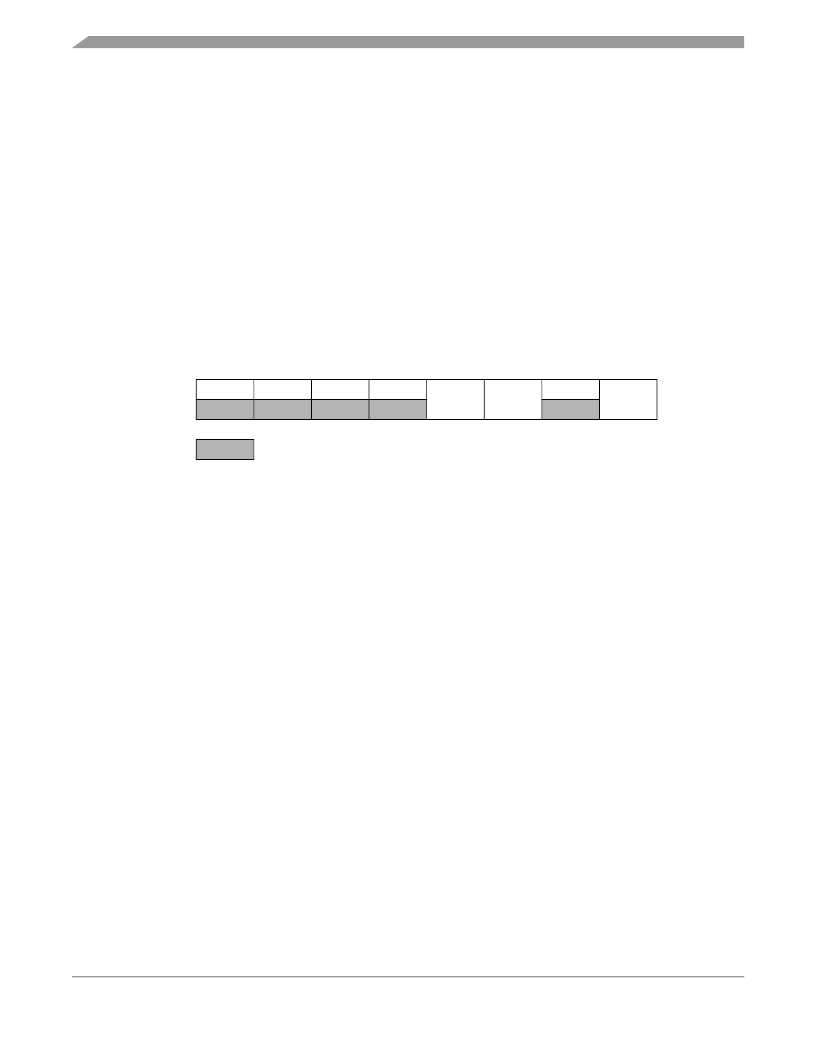- 您現(xiàn)在的位置:買賣IC網(wǎng) > PDF目錄371076 > MC908QL2V (Motorola, Inc.) Microcontrollers PDF資料下載
參數(shù)資料
| 型號(hào): | MC908QL2V |
| 廠商: | Motorola, Inc. |
| 英文描述: | Microcontrollers |
| 中文描述: | 微控制器 |
| 文件頁(yè)數(shù): | 140/222頁(yè) |
| 文件大?。?/td> | 2861K |
| 代理商: | MC908QL2V |
第1頁(yè)第2頁(yè)第3頁(yè)第4頁(yè)第5頁(yè)第6頁(yè)第7頁(yè)第8頁(yè)第9頁(yè)第10頁(yè)第11頁(yè)第12頁(yè)第13頁(yè)第14頁(yè)第15頁(yè)第16頁(yè)第17頁(yè)第18頁(yè)第19頁(yè)第20頁(yè)第21頁(yè)第22頁(yè)第23頁(yè)第24頁(yè)第25頁(yè)第26頁(yè)第27頁(yè)第28頁(yè)第29頁(yè)第30頁(yè)第31頁(yè)第32頁(yè)第33頁(yè)第34頁(yè)第35頁(yè)第36頁(yè)第37頁(yè)第38頁(yè)第39頁(yè)第40頁(yè)第41頁(yè)第42頁(yè)第43頁(yè)第44頁(yè)第45頁(yè)第46頁(yè)第47頁(yè)第48頁(yè)第49頁(yè)第50頁(yè)第51頁(yè)第52頁(yè)第53頁(yè)第54頁(yè)第55頁(yè)第56頁(yè)第57頁(yè)第58頁(yè)第59頁(yè)第60頁(yè)第61頁(yè)第62頁(yè)第63頁(yè)第64頁(yè)第65頁(yè)第66頁(yè)第67頁(yè)第68頁(yè)第69頁(yè)第70頁(yè)第71頁(yè)第72頁(yè)第73頁(yè)第74頁(yè)第75頁(yè)第76頁(yè)第77頁(yè)第78頁(yè)第79頁(yè)第80頁(yè)第81頁(yè)第82頁(yè)第83頁(yè)第84頁(yè)第85頁(yè)第86頁(yè)第87頁(yè)第88頁(yè)第89頁(yè)第90頁(yè)第91頁(yè)第92頁(yè)第93頁(yè)第94頁(yè)第95頁(yè)第96頁(yè)第97頁(yè)第98頁(yè)第99頁(yè)第100頁(yè)第101頁(yè)第102頁(yè)第103頁(yè)第104頁(yè)第105頁(yè)第106頁(yè)第107頁(yè)第108頁(yè)第109頁(yè)第110頁(yè)第111頁(yè)第112頁(yè)第113頁(yè)第114頁(yè)第115頁(yè)第116頁(yè)第117頁(yè)第118頁(yè)第119頁(yè)第120頁(yè)第121頁(yè)第122頁(yè)第123頁(yè)第124頁(yè)第125頁(yè)第126頁(yè)第127頁(yè)第128頁(yè)第129頁(yè)第130頁(yè)第131頁(yè)第132頁(yè)第133頁(yè)第134頁(yè)第135頁(yè)第136頁(yè)第137頁(yè)第138頁(yè)第139頁(yè)當(dāng)前第140頁(yè)第141頁(yè)第142頁(yè)第143頁(yè)第144頁(yè)第145頁(yè)第146頁(yè)第147頁(yè)第148頁(yè)第149頁(yè)第150頁(yè)第151頁(yè)第152頁(yè)第153頁(yè)第154頁(yè)第155頁(yè)第156頁(yè)第157頁(yè)第158頁(yè)第159頁(yè)第160頁(yè)第161頁(yè)第162頁(yè)第163頁(yè)第164頁(yè)第165頁(yè)第166頁(yè)第167頁(yè)第168頁(yè)第169頁(yè)第170頁(yè)第171頁(yè)第172頁(yè)第173頁(yè)第174頁(yè)第175頁(yè)第176頁(yè)第177頁(yè)第178頁(yè)第179頁(yè)第180頁(yè)第181頁(yè)第182頁(yè)第183頁(yè)第184頁(yè)第185頁(yè)第186頁(yè)第187頁(yè)第188頁(yè)第189頁(yè)第190頁(yè)第191頁(yè)第192頁(yè)第193頁(yè)第194頁(yè)第195頁(yè)第196頁(yè)第197頁(yè)第198頁(yè)第199頁(yè)第200頁(yè)第201頁(yè)第202頁(yè)第203頁(yè)第204頁(yè)第205頁(yè)第206頁(yè)第207頁(yè)第208頁(yè)第209頁(yè)第210頁(yè)第211頁(yè)第212頁(yè)第213頁(yè)第214頁(yè)第215頁(yè)第216頁(yè)第217頁(yè)第218頁(yè)第219頁(yè)第220頁(yè)第221頁(yè)第222頁(yè)

Slave LIN Interface Controller (SLIC) Module
MC68HC908QL4 MC68HC908QL3 MC68HC908QL2 Data Sheet, Rev. 4
140
Freescale Semiconductor
IMSG — SLIC Ignore Message Bit
IMSG cannot be cleared by a write of 0, but is cleared automatically by the SLIC module after the next
BREAK/SYNC symbol pair is validated. After it is set, IMSG will not keep data from being written to the
receive data buffer, which means that the buffers cannot be assumed to contain known valid message
data until the next receive buffer full interrupt. IMSG must not be used in BTM mode.
1 = SLIC to ignore data field of message, SLIC interrupts are suppressed until the next message
header arrives
0 = Normal operation
SLCIE — SLIC Interrupt Enable
1 = SLIC interrupt sources are enabled
0 = SLIC interrupt sources are disabled
14.8.2 SLIC Control Register 2
SLIC control register 2 (SLCC2) contains bits used to control various features of the SLIC module.
SLCWCM — SLIC Wait Clock Mode
This bit can only be written once out of reset state.
1 = SLIC clocks stop when the CPU is placed into wait mode
0 = SLIC clocks continue to run when the CPU is placed into wait mode so that the SLIC can receive
messages and wakeup the CPU.
BTM — UART Byte Transfer Mode
Byte transmit mode bypasses the normal LIN message framing and checksum monitoring and allows
the user to send and receive single bytes in a method similar to a half-duplex UART. When enabled,
this mode reads the bit time register (SLCBT) value and assumes this is the value corresponding to
the number of SLIC clock counts for one bit time to establish the desired UART bit rate. The user
software must initialize this register prior to sending or receiving data, based on the input clock
selection, prescaler stage choice, and desired bit rate.
BTM forces the data length in SLCDLC to one byte (DLC = 0x00) and disables the checksum circuitry
so that CHKMOD has no effect. Refer to
14.9.15 Byte Transfer Mode Operation
for more detailed
information about how to use this mode. BTM sets up the SLIC module to send and receive one byte
at a time, with 8-bit data, no parity, and one stop bit (8-N-1). This is the most commonly used setup for
UART communications and should work for most applications. This is fixed in the SLIC and is not
configurable.
1 = UART byte transfer mode enabled
0 = UART byte transfer mode disabled
SLCE — SLIC Module Enable
1 = SLIC module enabled
0 = SLIC module disabled
Bit 7
6
5
4
3
2
1
Bit 0
Read:
0
0
0
0
SLCWCM
BTM
0
SLCE
Write:
Reset:
0
0
0
0
0
0
0
0
= Unimplemented
Figure 14-5. SLIC Control Register 2 (SLCC2)
相關(guān)PDF資料 |
PDF描述 |
|---|---|
| MC908QL4DT | Microcontrollers |
| MC908QL4DW | Microcontrollers |
| MC908QL4M | Microcontrollers |
| MC908QL4V | Microcontrollers |
| MC912DG128x | microcontroller unit 16BIT DEVICE |
相關(guān)代理商/技術(shù)參數(shù) |
參數(shù)描述 |
|---|---|
| MC908QL3C | 制造商:MOTOROLA 制造商全稱:Motorola, Inc 功能描述:Microcontrollers |
| MC908QL3CDWE | 功能描述:8位微控制器 -MCU NITRON LIN RoHS:否 制造商:Silicon Labs 核心:8051 處理器系列:C8051F39x 數(shù)據(jù)總線寬度:8 bit 最大時(shí)鐘頻率:50 MHz 程序存儲(chǔ)器大小:16 KB 數(shù)據(jù) RAM 大小:1 KB 片上 ADC:Yes 工作電源電壓:1.8 V to 3.6 V 工作溫度范圍:- 40 C to + 105 C 封裝 / 箱體:QFN-20 安裝風(fēng)格:SMD/SMT |
| MC908QL3DT | 制造商:MOTOROLA 制造商全稱:Motorola, Inc 功能描述:Microcontrollers |
| MC908QL3DW | 制造商:MOTOROLA 制造商全稱:Motorola, Inc 功能描述:Microcontrollers |
| MC908QL3M | 制造商:MOTOROLA 制造商全稱:Motorola, Inc 功能描述:Microcontrollers |
發(fā)布緊急采購(gòu),3分鐘左右您將得到回復(fù)。